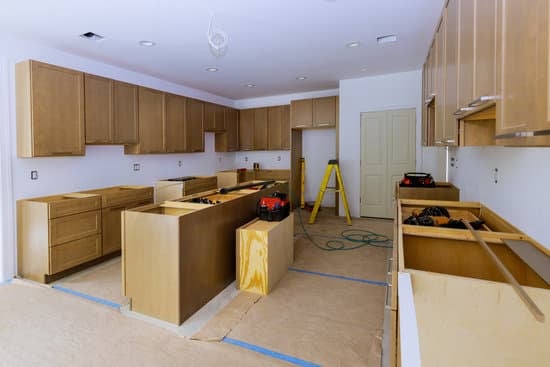Are you wondering how to choose which home improvement projects to tackle? With so many options and considerations, it can be overwhelming to decide where to start. From identifying your goals and priorities to seeking professional advice, there are several factors to take into account when planning your next home improvement project.
The first step in choosing the right home improvement project is identifying your goals and priorities. Whether you want to increase the value of your home, enhance its functionality, or simply update its aesthetic appeal, understanding what you hope to achieve will guide your decision-making process. By having a clear vision of what you want to accomplish, you can narrow down the endless possibilities for improvement and focus on projects that align with your objectives.
Once you have established your goals, the next consideration is assessing your budget and resources. Understanding how much you are willing and able to invest in a project will help you prioritize and make informed decisions about where to allocate your funds. Evaluating the needs of your home and researching the potential return on investment are also crucial steps in determining which home improvement projects are worth pursuing.
By taking a thoughtful approach and considering all aspects of the decision-making process outlined in this article, you can confidently choose the best home improvement projects for your unique situation. Stay tuned as we delve deeper into each step of this process to help you make informed choices for enhancing your living space.
Assessing Your Budget and Resources
When it comes to home improvement projects, one of the most crucial factors to consider is your budget and the resources available to you. Before diving into any project, it’s essential to have a clear understanding of how much you are willing to spend and what resources you have at your disposal.
Setting a Realistic Budget
The first step in assessing your budget is to determine how much you can realistically afford to spend on a home improvement project. This includes taking into account the cost of materials, labor, permits, and any unexpected expenses that may arise. It’s important to be honest with yourself about what you can afford, as overspending can lead to financial stress and potential project abandonment.
Exploring Financing Options
If your budget falls short of what is required for the project you desire, it may be worth exploring financing options such as personal loans or home equity lines of credit. However, it’s crucial to carefully consider the terms and interest rates associated with these options before making any decisions. Taking on too much debt can have long-term consequences, so it’s essential to proceed with caution.
Assessing Available Resources
In addition to budget considerations, it’s also vital to assess the resources available for your home improvement project. This includes evaluating if you have access to skilled labor, tools, necessary equipment, and materials.
If certain resources are not readily available to you, it may be worthwhile considering alternative options or seeking assistance from professionals who have the necessary resources at their disposal. By thoroughly assessing your budget and resources before starting a home improvement project, you can make informed decisions and avoid potential financial strain down the line.
Evaluating the Needs of Your Home
When evaluating the needs of your home, it’s important to consider both functional and aesthetic aspects. Functionally, you’ll want to identify any issues that need to be addressed for safety or efficiency reasons. This can include things like a leaky roof, outdated electrical wiring, or plumbing problems. Aesthetic considerations may involve outdated decor or worn-out features that detract from the overall look and feel of your home.
Another important aspect of evaluating your home’s needs is to consider its long-term maintenance requirements. For example, if you have a large yard but little time for upkeep, you may want to invest in low-maintenance landscaping options. Similarly, if you have an older home with aging appliances, it might make sense to prioritize replacing these items before they start causing regular maintenance headaches.
As part of this evaluation process, it can also be helpful to conduct a comprehensive home inspection. This will help uncover any hidden issues that may not be immediately apparent but could become bigger problems down the road. By taking the time to thoroughly evaluate your home’s needs, you can make more informed decisions about which improvement projects are most pressing and beneficial in the long run.
Researching Potential Return on Investment
When deciding which home improvement projects to take on, one important factor to consider is the potential return on investment (ROI). Researching the ROI of different projects can help homeowners make informed decisions about where to invest their time and money.
Some common home improvement projects with a high ROI include kitchen renovations, bathroom remodels, and adding a deck or patio. These projects typically have a high value when it comes to resale and can also enhance the overall enjoyment of the home for the current occupants.
For those considering selling their home in the near future, it is essential to research which home improvement projects will provide the best ROI. According to a study by Remodeling Magazine, some of the highest ROI improvements for 2021 include manufactured stone veneer, garage door replacement, and minor kitchen remodels. It’s also important to consider the local housing market when researching potential ROI, as trends may vary depending on location.
In addition to considering ROI for potential resale value, homeowners should also think about how certain improvements can lead to long-term cost savings. For example, investing in energy-efficient windows or upgrading insulation can result in lower utility bills over time. Understanding the financial implications of various home improvement projects can help homeowners make smart choices that align with their goals and priorities.
| Home Improvement Project | Potential Return on Investment |
|---|---|
| Kitchen renovation | 70-80% |
| Bathroom remodel | 60-70% |
| Deck or patio addition | 75-85% |
Prioritizing Based on Urgency and Impact
When it comes to choosing which home improvement projects to tackle, prioritizing based on urgency and impact is a crucial step in the decision-making process. It’s important to assess which areas of your home require immediate attention due to safety concerns or potential damage if left unaddressed. For example, a leaky roof or faulty electrical wiring should take precedence over purely cosmetic upgrades.
In addition to urgency, it’s essential to consider the impact that each potential project will have on your home. This could include factors such as improving energy efficiency, enhancing curb appeal, or creating a more functional living space. By evaluating the potential impact of each project, you can prioritize those that will provide the most benefit and value for your investment.
It’s also worth considering how each project will contribute to the overall quality of life in your home. For instance, a kitchen remodel may significantly improve your daily living experience by providing a more efficient and enjoyable cooking space. By taking into account both short-term urgency and long-term impact, you can make informed decisions about which home improvement projects should be tackled first.
Considering Your Personal Preferences and Lifestyle
When it comes to choosing which home improvement projects to tackle, considering your personal preferences and lifestyle is an essential step in the decision-making process. Your home should reflect your personality and be tailored to fit your specific needs, so it’s important to take these factors into account before embarking on any renovation or remodeling endeavor.
One key aspect to consider when evaluating your personal preferences and lifestyle is how you currently use the space in your home. For example, if you love cooking and entertaining, investing in a kitchen remodel may be a top priority for you. On the other hand, if you value relaxation and downtime, creating a cozy and inviting living room or bedroom might be more important.
Additionally, think about the design styles and aesthetics that resonate with you. Whether you prefer a modern, minimalist look or a more traditional and cozy vibe, your home should be a reflection of your taste and style. Incorporating elements that make you feel comfortable and happy in your space will ultimately lead to a more satisfying living experience.
| Element | Description |
|---|---|
| Usage of Space | Evaluating how each room is currently used. |
| Design Style | Considering preferred aesthetic for the home. |
Seeking Professional Advice and Estimates
When it comes to home improvement projects, seeking professional advice and estimates is a crucial step in the decision-making process. Whether you’re considering a small renovation or a major remodel, consulting with experts in the field can provide valuable insights and help you make informed choices. Here are some key points to keep in mind when seeking professional advice and estimates:
1. Research and Find Reliable Professionals: Take the time to research and find reputable contractors, architects, designers, or consultants who specialize in the type of project you’re planning. Look for professionals with positive reviews, relevant experience, and proper credentials.
2. Request Multiple Estimates: Don’t settle for the first estimate you receive. It’s important to shop around and compare multiple estimates from different professionals. This will give you a better understanding of the average cost for your project and allow you to make a more informed decision.
3. Ask Questions and Seek Clarity: When meeting with professionals for estimates, don’t hesitate to ask questions about the scope of work, materials, timeline, potential challenges, or any other concerns you may have. Seek clarity on all aspects of the project before making a final decision.
Seeking professional advice and estimates is an essential part of the home improvement process that can save time, money, and stress in the long run. By taking the time to find reliable professionals, requesting multiple estimates, and asking relevant questions, you’ll be better equipped to make decisions that align with your goals and priorities for your home improvement project.
Making a Plan and Setting Realistic Expectations
When it comes to home improvement projects, making a plan and setting realistic expectations is essential for a successful outcome. Here are some key steps to consider when creating your plan:
- Determine the scope of the project: Before starting any home improvement project, clearly define the scope of work. This will help you understand what needs to be done and how long it might take to complete.
- Create a timeline: Establishing a timeline for the project will help you stay organized and on track. Consider factors such as material delivery, contractor availability, and any potential setbacks that may arise.
- Set a budget: It’s important to establish a realistic budget for the project based on your financial resources and the scope of work. Include contingencies for unexpected expenses that may arise during the construction or renovation process.
- Consider potential challenges: Anticipate any potential challenges that may arise during the project, such as structural issues, permits, or weather-related delays. Having contingency plans in place can help mitigate these challenges and prevent them from derailing your project.
By making a detailed plan and setting realistic expectations, you can ensure that your home improvement project stays on track and delivers the results you desire. Remember to be flexible and patient throughout the process, as unexpected obstacles may arise along the way.
Implementing the Project and Monitoring Progress
Setting a Timeline and Milestones
Once you have decided on the home improvement project to tackle, it’s essential to set a timeline for its implementation. Whether it’s a small renovation or a major construction, having a clear schedule will help keep the project on track. Break down the project into milestones and establish deadlines for each one. This will ensure that progress is being made and any delays can be quickly addressed.
Hiring Contractors and Obtaining Permits
Depending on the scope of your home improvement project, you may need to hire professional contractors such as builders, electricians, plumbers, or designers. It’s crucial to research and choose reputable professionals who have experience in similar projects. Additionally, be sure to obtain any necessary permits from your local government before beginning work on the project.
Regular Check-Ins and Quality Control
Throughout the implementation phase, it’s important to conduct regular check-ins with the contractors to monitor progress and address any concerns or issues that may arise. This ensures that the project stays on track and meets your expectations. Quality control is also vital during this phase to guarantee that all work is being done according to industry standards and regulations.
By effectively implementing the home improvement project and closely monitoring its progress, you can ensure that your vision for your home becomes a reality while maintaining quality and adhering to your established timeline.
Reflecting on the Results and Making Adjustments
In conclusion, choosing which home improvement projects to undertake requires careful consideration and planning. By following the steps outlined in this article, homeowners can make informed decisions that align with their goals, budget, and the needs of their home. Reflecting on the results and making adjustments is the final step in the process, allowing homeowners to evaluate the success of their projects and make any necessary changes for future improvements.
After completing a home improvement project, it is important to take the time to assess the outcome. This includes considering whether the project achieved its intended goals, if it added value to the home, and if it improved the overall functionality and aesthetics. Reflecting on these results will help homeowners make informed decisions for future projects and prioritize where to allocate resources.
Furthermore, making adjustments based on reflections from past projects is crucial for ongoing home improvement. Homeowners should use their experiences and lessons learned to inform future decisions, whether it be choosing new projects or adjusting their approach. By reflecting on the results and making adjustments, homeowners can continue to enhance their living spaces while maximizing their investments in home improvement.
Overall, choosing which home improvement projects require careful consideration at every stage of the process. By taking into account goals, budget, needs of the home, return on investment potential, urgency and impact priorities as well as personal preferences evoke more chances of increasing successful outcomes when reflecting on and making adjustments after each project completion can guarantee continuous progress towards accomplishing a functional beautiful living space.
Frequently Asked Questions
How Do I Choose Which Home Improvement to Do First?
When choosing which home improvement project to do first, it’s important to consider factors such as the urgency of the project, the budget available, and the potential return on investment. Start by making a list of all the projects you want to tackle and then prioritize them based on these factors.
Additionally, consider any maintenance or repair issues that need immediate attention before moving onto more cosmetic upgrades.
How Do You Prioritize a Home Remodeling Project?
Prioritizing a home remodeling project involves evaluating the overall goals for your home and breaking down the project into smaller tasks. It’s essential to consider factors such as budget constraints, time restraints, and the impact each project will have on your daily life.
Household essentials like plumbing or electrical work should take precedence over purely aesthetic improvements, while also considering how each task contributes to the overall vision for your home.
How Do I Decide Which Project to Do First?
Deciding which home improvement project to do first can be overwhelming, but there are a few key considerations that can help make the decision easier. Start by assessing the urgency and necessity of each project, taking into account any safety or functional concerns that need immediate attention.
Then consider your budget and resources available for each project. Ultimately, choose the project that provides the most value and long-term benefit to both you and your home.

I’m thrilled to have you here as a part of the Remodeling Top community. This is where my journey as an architect and remodeling enthusiast intersects with your passion for transforming houses into dream homes.





